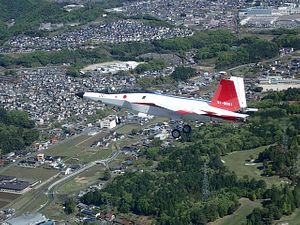Japan’s Acquisition, Technology, and Logistics Agency and the United Kingdom’s Ministry of Defense have concluded an agreement to explore options for co-developing an advanced fighter jet, according to a March 16 press release by the Japanese Ministry of Defense.
The agreement stipulates that both countries will exchange information about advanced aviation technology and also conduct a joint study on the feasibility of co-developing a new fighter aircraft in the coming years.
The press release further notes that Japan will continue to explore fighter jet co-development options with other countries. “Regarding the possibility of international joint development on fighter aircraft in the future, we will continue to exchange views with other countries,” the MoD statement reads.
While the next-generation fighter jet project would be the biggest Japan-UK collaboration on sensitive defense technology so far, both countries are also a working on jointly developing a new ramjet-powered, beyond a visual range air-to-air missile.
During a January 2016 visit, the UK defense minister and his Japanese counterpart agreed to move discussions on the project to the next stage. The aim of the project is to integrate Japanese seeker technologies into the European Meteor Beyond Visual Range Air-to-Air Missile.
In October 2016, the UK Royal Air Force (RAF) and the Japan Air Self-Defense Force (JASDF) also held their first-ever joint aerial combat drill, dubbed Guardian North 16, in Japan. The exercise involved four RAF Eurofighter Typhoon fighter jets, JASDF Boeing F-15J all-weather air superiority fighters and Mitsubishi F-2s.
The Eurofighter consortium, which includes the United Kingdom, unsuccessfully tried to pitch the Eurofighter Typhoon aircraft to Japan in 2011. The JASDF, however, opted for the U.S.-made F-35A Lightning II stealth fighter jet instead. Japan placed an order for 42 F-35 through the U.S. Foreign Military Sales Program in 2011. The first aircraft was handed over to the JASDF in December 2016.
Nevertheless, the F-35 order is an interim solution and Japan is slated to procure up to 100 new fifth-generation air superiority fighters by the 2030s. An estimated $20 billion contract is expected to be awarded in the summer of 2018 (See: “Japan’s Air Force to Receive 100 New Stealth Fighter Jets”).
As I explained in July 2016, Japan has three options for procuring for the new aircraft: “First, develop an indigenous air superiority fighter. Second, partner with a foreign defense contractor and license-produce a new aircraft. Third, import or upgrade an existing platform.” The UK-Japan joint study falls into the second option of partnering with a foreign aircraft maker.
However, U.S. aircraft makers will remain Japan’s top choice for any future fighter jet co-development projects. Last year, Japan unveiled an experimental fifth-generation fighter technology demonstrator, dubbed X-2 “Shinshin” (formerly the ATD-X), which will be the basis for the JASDF’s so-called (F-3) Future Fighter Program. As I reported last year, U.S. defense contractor Lockheed-Martin is purportedly already involved with the project in some capacity.
































